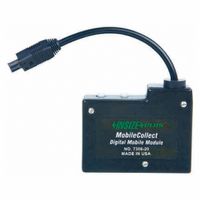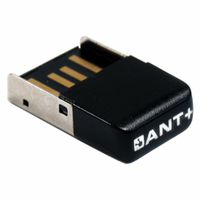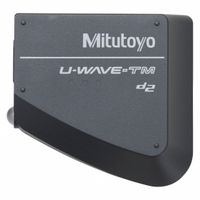Call +(254) 703 030 000 / 751 483 999 / 721 704 777
- Home
- Machining
- Precision Measuring Tools
- Spc Components For Precision Measuring Tools
- Wireless Spc Data Transfer Components
.....Read More
Frequently Asked Questions
What is Wireless SPC data transfer?
Wireless SPC (Statistical Process Control) data transfer refers to the transmission of SPC data over wireless networks. SPC is a method used in manufacturing and other industries to monitor and control processes through statistical analysis. Wireless SPC data transfer enables real-time data collection and analysis without the constraints of physical connections, enhancing flexibility and efficiency.
In a typical setup, sensors and devices collect data from various points in a manufacturing process. This data is then transmitted wirelessly to a central system for analysis. Technologies such as Wi-Fi, Bluetooth, Zigbee, or cellular networks are commonly used for this purpose. The wireless approach allows for seamless integration of data from multiple sources, facilitating comprehensive monitoring and quicker response to process variations.
The benefits of wireless SPC data transfer include reduced installation and maintenance costs, as there is no need for extensive cabling. It also allows for easier scalability and reconfiguration of systems, as devices can be added or moved without significant infrastructure changes. Additionally, wireless systems can be deployed in environments where wiring is impractical or hazardous.
Security is a critical consideration in wireless SPC data transfer, as data integrity and confidentiality must be maintained. Encryption and secure communication protocols are employed to protect data from unauthorized access and tampering.
Overall, wireless SPC data transfer enhances the ability to maintain high-quality standards and optimize processes by providing timely and accurate data for decision-making.
How do wireless transmitters work with precision measuring tools?
Wireless transmitters in precision measuring tools work by converting the physical measurements captured by the tool into electronic signals, which are then transmitted wirelessly to a receiver or a data collection system. Here's a breakdown of the process:
1. **Measurement Capture**: The precision tool, such as a caliper or micrometer, measures a physical parameter like length, pressure, or temperature.
2. **Signal Conversion**: The tool is equipped with sensors that convert the physical measurement into an electronic signal. This signal is typically analog.
3. **Analog-to-Digital Conversion**: The analog signal is converted into a digital format using an analog-to-digital converter (ADC). This digital signal is necessary for wireless transmission.
4. **Data Encoding**: The digital signal is encoded into a format suitable for transmission. This may involve data compression or error-checking algorithms to ensure accuracy and reliability.
5. **Wireless Transmission**: The encoded data is transmitted wirelessly using radio frequency (RF) technology, Bluetooth, Wi-Fi, or other wireless communication protocols. The choice of protocol depends on factors like range, data rate, and power consumption.
6. **Reception and Decoding**: The transmitted signal is received by a compatible receiver or data collection system. The receiver decodes the signal back into a digital format.
7. **Data Processing and Display**: The decoded data is processed and displayed on a computer, mobile device, or dedicated display unit. This allows for real-time monitoring and analysis of the measurements.
8. **Feedback and Control**: In some systems, the data can be used for feedback control, automatically adjusting processes based on the measurements.
This wireless integration enhances the flexibility, efficiency, and accuracy of precision measuring tools, enabling remote monitoring and data logging without the constraints of physical connections.
What are the benefits of using wireless SPC data transfer components?
Wireless SPC (Statistical Process Control) data transfer components offer several benefits:
1. **Real-Time Data Access**: Wireless systems enable immediate access to data, allowing for real-time monitoring and quicker decision-making. This can lead to faster identification of process deviations and prompt corrective actions.
2. **Increased Flexibility**: Wireless components eliminate the need for physical connections, providing greater flexibility in equipment placement and layout changes. This adaptability is particularly beneficial in dynamic manufacturing environments.
3. **Cost Efficiency**: By reducing the need for extensive cabling and associated infrastructure, wireless systems can lower installation and maintenance costs. This can result in significant savings, especially in large-scale operations.
4. **Improved Data Accuracy**: Wireless data transfer minimizes human error associated with manual data entry. Automated data collection ensures more accurate and reliable data, enhancing the quality of SPC analysis.
5. **Enhanced Mobility**: Operators and quality control personnel can access SPC data from various locations within the facility, improving mobility and efficiency. This is particularly useful for large plants or multi-site operations.
6. **Scalability**: Wireless systems can be easily scaled to accommodate additional devices or expanded operations without the need for extensive rewiring, making them ideal for growing businesses.
7. **Reduced Downtime**: Wireless systems are less prone to physical damage compared to wired systems, potentially reducing downtime caused by cable failures or disconnections.
8. **Integration with IoT**: Wireless SPC components can seamlessly integrate with IoT devices and platforms, enabling advanced analytics and predictive maintenance strategies.
9. **Environmental Benefits**: By reducing the need for physical materials like cables, wireless systems contribute to a smaller environmental footprint.
10. **Enhanced Security**: Modern wireless systems incorporate robust security protocols to protect sensitive data from unauthorized access, ensuring data integrity and confidentiality.
How do wireless receivers connect to computers for data analysis?
Wireless receivers connect to computers for data analysis through several methods:
1. **Bluetooth**: Wireless receivers use Bluetooth technology to establish a short-range connection with computers. Once paired, data is transmitted wirelessly, allowing for real-time analysis. This method is commonly used for devices like wireless keyboards, mice, and some sensors.
2. **Wi-Fi**: Receivers can connect to computers via Wi-Fi networks. This method is suitable for devices that require higher data transfer rates and longer range. The receiver connects to the same network as the computer, enabling data transmission for analysis. This is often used in IoT devices and smart home systems.
3. **USB Dongles**: Some wireless receivers come with USB dongles that plug into the computer. The dongle acts as a bridge, receiving data from the wireless device and transmitting it to the computer via USB. This is common in wireless peripherals and some specialized equipment.
4. **Proprietary Wireless Protocols**: Certain devices use proprietary protocols for communication. These protocols are designed for specific applications and may require dedicated software on the computer to interpret the data. Examples include some medical devices and industrial sensors.
5. **NFC (Near Field Communication)**: For short-range data transfer, NFC can be used. The receiver communicates with the computer when in close proximity, suitable for applications like contactless payments and access control.
6. **Software and Drivers**: Regardless of the connection method, appropriate software and drivers are often required on the computer to interpret and analyze the data. This software may provide visualization tools, data logging, and other analytical functions.
These methods enable seamless data transfer from wireless receivers to computers, facilitating efficient data analysis across various applications.
What is the range of wireless SPC data transfer systems?
The range of wireless Statistical Process Control (SPC) data transfer systems can vary significantly based on the technology used, environmental conditions, and specific system configurations. Common wireless technologies used for SPC data transfer include Wi-Fi, Bluetooth, Zigbee, and cellular networks, each offering different ranges:
1. **Wi-Fi**: Typically, Wi-Fi networks have a range of about 150 feet (46 meters) indoors and up to 300 feet (92 meters) outdoors. The range can be affected by obstacles like walls and interference from other electronic devices.
2. **Bluetooth**: Bluetooth technology generally offers a shorter range, usually around 30 feet (10 meters) for standard devices. However, Bluetooth 5.0 and later versions can extend the range up to 800 feet (240 meters) in ideal conditions.
3. **Zigbee**: Designed for low-power, low-data-rate applications, Zigbee networks can cover a range of about 200 feet (60 meters) indoors and up to 1,000 feet (300 meters) outdoors. Zigbee's mesh networking capability can extend the range by allowing data to hop between multiple devices.
4. **Cellular Networks**: Cellular-based systems, such as those using 4G or 5G, can theoretically cover vast areas, limited primarily by the coverage of the cellular network itself. This makes them suitable for remote or widely distributed SPC applications.
5. **LoRaWAN**: For long-range, low-power applications, LoRaWAN can provide coverage over several miles, with ranges up to 10 miles (16 kilometers) in rural areas and 3 miles (5 kilometers) in urban settings.
The choice of technology depends on the specific requirements of the SPC system, including data rate, power consumption, and environmental factors. Additionally, the presence of physical obstructions, interference, and network topology can all influence the effective range of these wireless systems.
Can multiple tools be connected to a single wireless receiver?
Yes, multiple tools can be connected to a single wireless receiver, depending on the technology and protocols used. Wireless communication technologies like Bluetooth, Wi-Fi, and proprietary RF systems often support multiple device connections to a single receiver or hub.
1. **Bluetooth**: Bluetooth technology, especially versions like Bluetooth 4.0 and above, supports multiple device connections through a feature called "Bluetooth multipoint." This allows a single receiver to connect with multiple Bluetooth-enabled devices simultaneously, although the number of devices may be limited by the specific implementation and device capabilities.
2. **Wi-Fi**: Wi-Fi networks inherently support multiple device connections. A single Wi-Fi router or access point can connect to numerous devices, such as smartphones, laptops, and IoT devices, simultaneously. The number of devices is generally limited by the router's capacity and bandwidth.
3. **Proprietary RF Systems**: Many proprietary RF systems used in industrial and consumer applications are designed to support multiple devices. These systems often use unique protocols to manage connections and data transmission between multiple tools and a single receiver.
4. **Zigbee and Z-Wave**: These are popular wireless communication protocols used in smart home and IoT applications. They support mesh networking, allowing multiple devices to connect and communicate with a central hub or receiver.
5. **Considerations**: The ability to connect multiple tools to a single receiver depends on factors like bandwidth, interference, and the specific protocol's limitations. It's essential to ensure that the receiver and connected devices are compatible and that the network can handle the data load without significant latency or performance issues.
In summary, connecting multiple tools to a single wireless receiver is feasible with the right technology and setup, allowing for efficient and centralized control of various devices.
What types of software are compatible with wireless SPC data transfer systems?
Wireless SPC (Statistical Process Control) data transfer systems are compatible with various types of software that facilitate data collection, analysis, and reporting. These include:
1. **Data Collection Software**: These applications interface with measurement devices and sensors to gather real-time data. Examples include Mitutoyo MeasurLink, InfinityQS, and ProFicient.
2. **Data Analysis Software**: These tools process and analyze the collected data to identify trends, variations, and anomalies. Minitab and JMP are popular choices for statistical analysis in SPC systems.
3. **Database Management Systems (DBMS)**: Software like Microsoft SQL Server, Oracle, and MySQL store and manage large volumes of SPC data, ensuring efficient retrieval and manipulation.
4. **Manufacturing Execution Systems (MES)**: These systems, such as Siemens SIMATIC IT and Rockwell Automation’s FactoryTalk, integrate SPC data to monitor and control manufacturing processes.
5. **Enterprise Resource Planning (ERP) Software**: Solutions like SAP and Oracle ERP can incorporate SPC data to enhance decision-making and resource planning.
6. **Quality Management Software (QMS)**: Platforms like MasterControl and ETQ Reliance use SPC data to ensure compliance with quality standards and improve product quality.
7. **Cloud-Based Platforms**: Services like AWS IoT, Microsoft Azure IoT, and Google Cloud IoT provide scalable solutions for storing and processing SPC data in the cloud.
8. **Custom Software Solutions**: Tailored applications developed using programming languages like Python, R, or C# can be designed to meet specific SPC data transfer and analysis needs.
9. **IoT Platforms**: These platforms, such as PTC ThingWorx and IBM Watson IoT, enable the integration of SPC data with other IoT devices for comprehensive monitoring and control.
10. **Visualization Tools**: Software like Tableau and Power BI can be used to create visual representations of SPC data, aiding in better understanding and communication of insights.
These software types ensure seamless integration, efficient data handling, and insightful analysis in wireless SPC data transfer systems.




